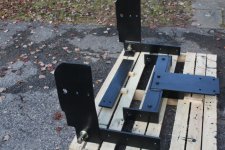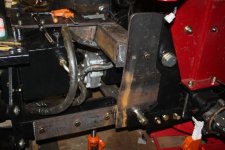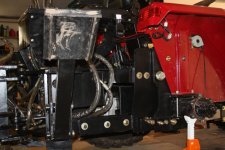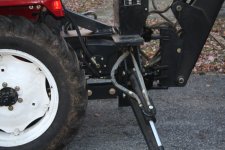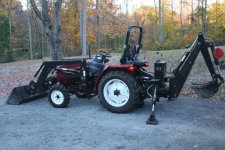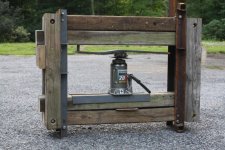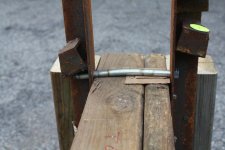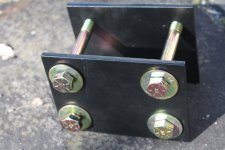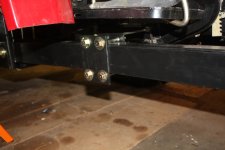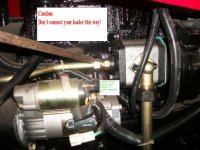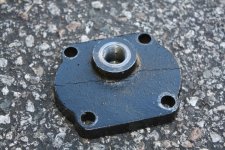Re: An "axle-surrounding" type subfram
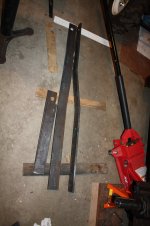
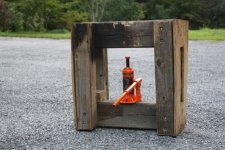 Thanks Gunny & LD1.
Thanks Gunny & LD1.
I wanted to share my experience with bending flat bar and plates. I had to bend the 1/2 x 3 inch flat bar that runs along side the loader subframe to create a 2 inch offset. (see first photo) As I don't have an acetylene torch, I needed to do the bend cold. I searched the web for help determining the force needed, but came up empty. As I don't have a shop press, I made a press using some old lumber from a defunct swing set and a 4 ton bottle jack. It creaked a lot, but held up. The press is not very pretty (second photo), but it worked. As the ends of press have openings, I can use any length of flat bar. Later in the project I had to bend 9 inch by 1/2 inch plate. The bends had to be much closer together than the bends in the 3 inch bar. When I get to that part of the project, I'll show the press I had to build and the forces involved.
The wood in the last photo was charred by my plasma cutter. Plasma cutting on a wood bench is probably not the smart thing I've ever done.

 Thanks Gunny & LD1.
Thanks Gunny & LD1.I wanted to share my experience with bending flat bar and plates. I had to bend the 1/2 x 3 inch flat bar that runs along side the loader subframe to create a 2 inch offset. (see first photo) As I don't have an acetylene torch, I needed to do the bend cold. I searched the web for help determining the force needed, but came up empty. As I don't have a shop press, I made a press using some old lumber from a defunct swing set and a 4 ton bottle jack. It creaked a lot, but held up. The press is not very pretty (second photo), but it worked. As the ends of press have openings, I can use any length of flat bar. Later in the project I had to bend 9 inch by 1/2 inch plate. The bends had to be much closer together than the bends in the 3 inch bar. When I get to that part of the project, I'll show the press I had to build and the forces involved.
The wood in the last photo was charred by my plasma cutter. Plasma cutting on a wood bench is probably not the smart thing I've ever done.
Last edited:
